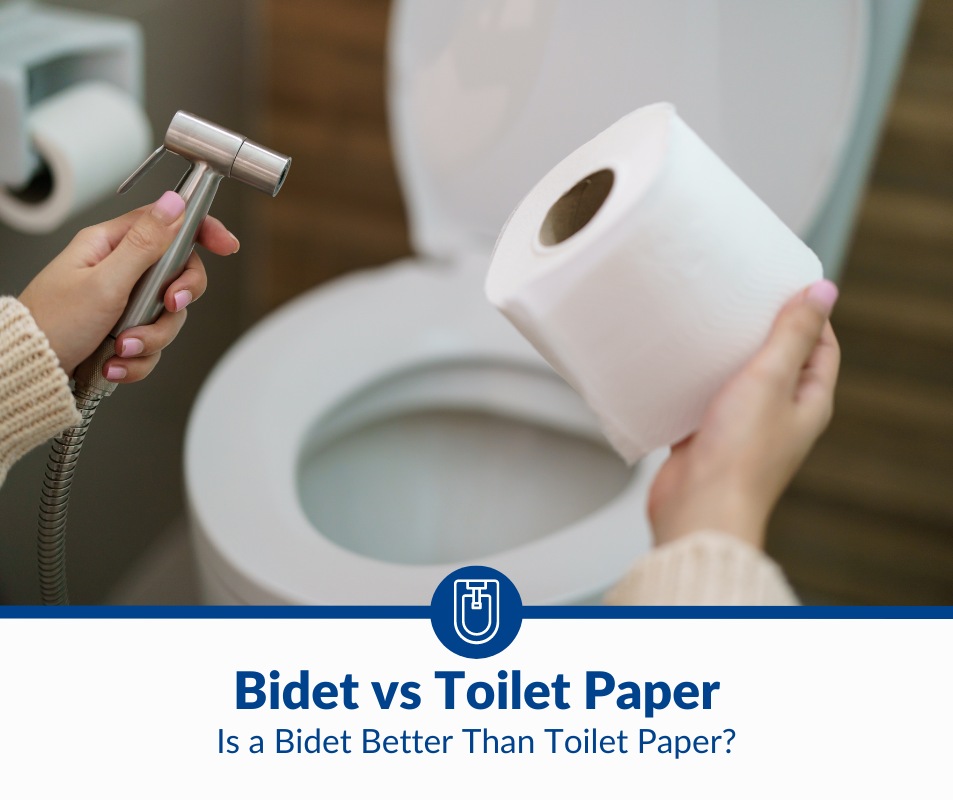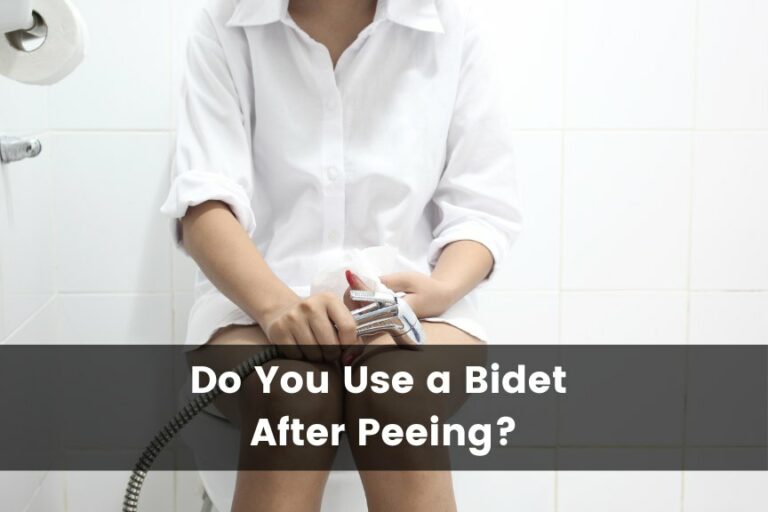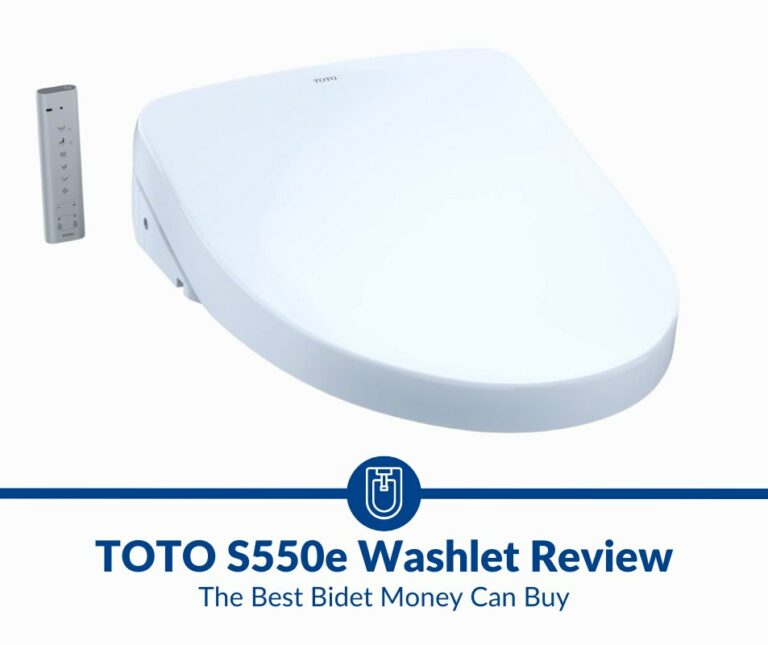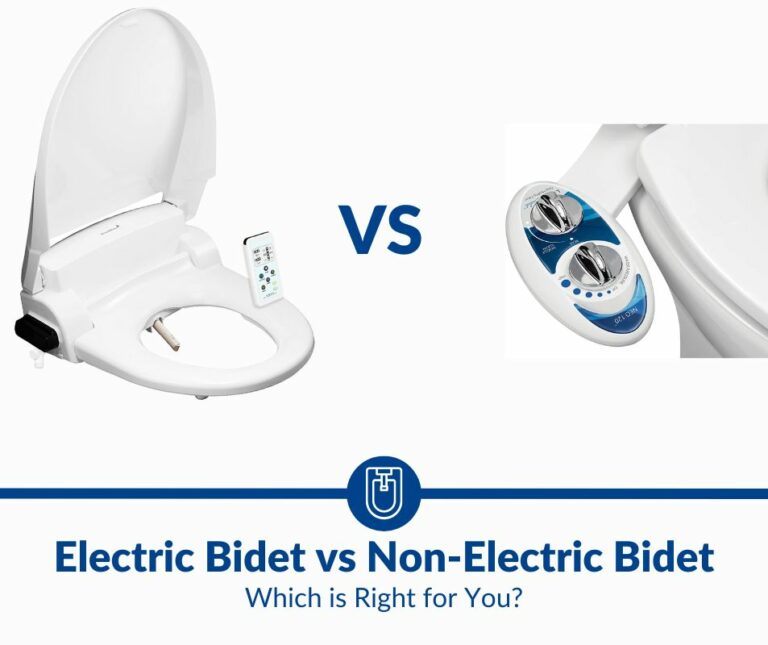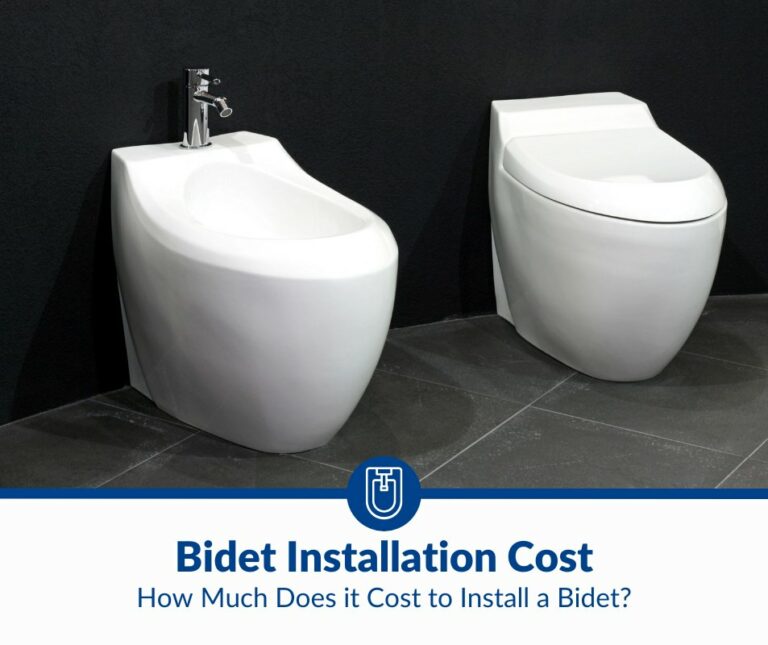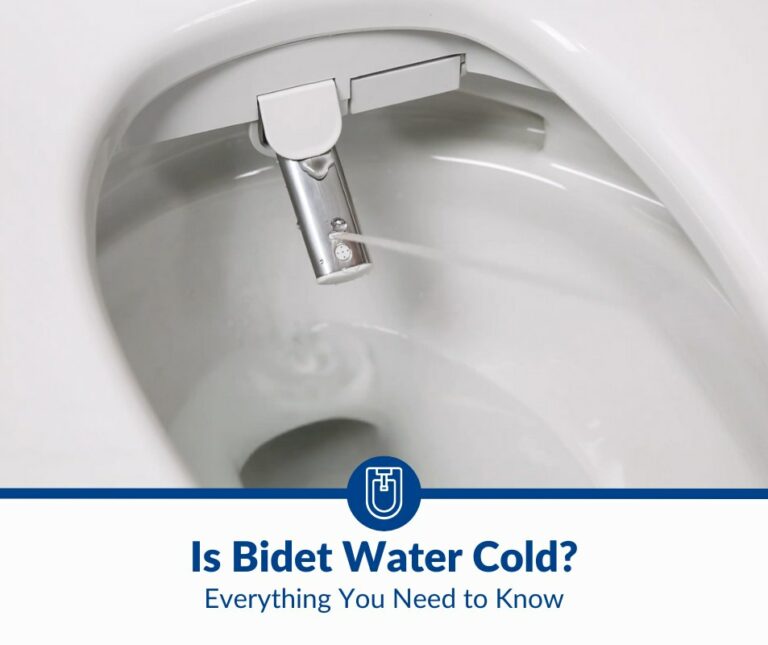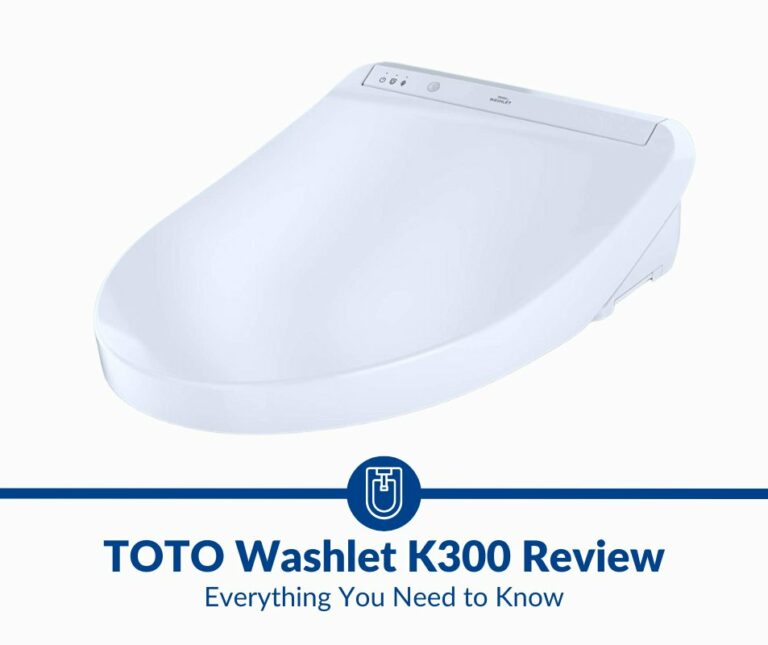Bidet vs. Toilet Paper: Is a Bidet Better Than Toilet Paper?
When you think about toilet hygiene, three things come to mind: toilet paper, bidets, and wipes. Although these products are made with a common purpose, they have varying pros and cons. Let’s compare and contrast bidets and toilet paper.
Bidets are better than toilet paper because they clean gently and more efficiently. They are also cheaper in the long term and better for the environment. However, bidets carry a significant risk of cross-infection, and chronic use is linked to various other health complications.
The rest of this article will compare the benefits and drawbacks of using bidets against those of toilet paper. I will highlight key factors such as cost differences, environmental impact, and ease of use to help you determine the better alternative.
What Are the Benefits of Using a Bidet?
They Clean Better Than Toilet Paper
Bidets are very efficient at cleaning after toilet use.
You often must repeatedly wipe when using toilet paper to eliminate all the fecal matter. In some instances, you cannot be sure that you have eliminated all the residue because you’ll keep seeing hinges of poop after you wipe. Moreover, you may miss a few spots in between pubic hairs.
On the contrary, the water pressure from a bidet efficiently rinses all poop residue from your behind, leaving you feeling clean and fresh. It also eliminates foul odors.
Moreover, unlike toilet paper, a bidet uses only a small amount of water to clean up after a bowel movement.
Bidets Are Friendlier to the Skin
When used correctly, bidets can be quite soothing to the skin. The stream of water from a bidet delicately cleans the sensitive skin around the genitals. It can help to relieve constipation and hemorrhoid discomfort.
Dissimilarly, repeatedly dry wiping with toilet paper can irritate the skin. It is not recommended for people who suffer from anal symptoms such as hemorrhoids because it can further aggravate these issues.
Relatively Easy To Use
Bidets require less effort yet clean better than toilet paper. They are also primarily hands-free, making them more sanitary than toilet paper.
Although some training is required before use, they are relatively easy to master, and even children can learn how to use them well.
Furthermore, they are convenient because you don’t need to worry about restocking, unlike toilet paper.
Better for People With Mobility Restrictions
Bidet seat attachments and hand-held bidets make the cleaning experience less difficult for people with mobility challenges. This is because they can clean while still seated after using the toilet and need not make strenuous movements.
For disabled people who rely on caregivers to help them wipe after using the toilet, having a bidet can restore feelings of independence since they are now able to clean themselves.
Bidets promote good hygiene, which is often a confidence booster.
Recommended for Menstruation and Postpartum
Bidet use may help postpartum mothers recover faster from vaginal birth by providing a gentler way to clean after toilet use because the genital and perineal area is sensitive and sore after vaginal delivery. Women are advised against dry wiping with toilet paper.
Correct details for postpartum can help to sort the area during cleaning, encouraging a better recovery.
On the other hand, bidet use during menstruation enhances the cleaning process because it is thorough and mainly hands-free. It also boosts confidence during this time and helps the woman feel better about herself amid the other unpleasant symptoms.
They Cost Less in the Long-Term
The initial cost of bidet installation is high. Nonetheless, it is a one-off investment that is more cost-efficient in the long term.
According to Business Insider, Americans spend an average of $55 on toilet paper annually per person. This expenditure can be reduced to a quarter or less by replacing tissue with a bidet.
Regarding water consumption, bidets do not use much water (about one-eighth of a gallon per use), and you may notice only a slight increase in your water bill.
Bidets Are Better for the Environment
Many trees need to be cut to keep up with the demand for toilet paper. Unfortunately, cutting trees can have devastating effects on the environment.
Moreover, substantially more water goes into manufacturing a single roll of toilet paper than for a single bidet use.
Dirty water from a bidet can quickly be recycled and reused for other purposes. On the other hand, used toilet paper cannot be recycled. You can only recycle toilet paper tubes.
Are There Any Disadvantages of Bidet Use?
Bidets are an eco-friendly and hygienic alternative to toilet paper but have some disadvantages. The following factors can make using a bidet unsafe:
- Overusing the bidet
- Following incorrect procedure
- Using a dirty bidet
- Contaminated water
- Sharing bidets in a hospital
- Sharing bidet towels
- Using a dirty bidet towel
- Hot water
- High water pressure
- Having a high-risk pregnancy
Below are some disadvantages of using bidets:
Chronic Bidet Use Is Associated With Anal Symptoms
Research has shown that chronic bidet use is associated with the following conditions:
- Anal incontinence: Having an impaired ability to control bowel movements
- Anal fissures: These are micro-tears in the mucous lining of the anus
- Anal itching.
High water pressure with a bidet was also a risk factor for these conditions.
Study participants who exhibited these symptoms were asked to stop bidet use for a month. Consequently, the symptoms decreased significantly.
Risk of Urinary Tract Infections
There are several ways that you can get a UTI when using a bidet, and they include:
- A dirty, contaminated bidet. Bidets that don’t get washed regularly accumulate bacteria that can splash back during bidet use or contaminate the water at the nozzle.
- When the bidet water source is contaminated, it can give the user a UTI.
- Washing back to front with a bidet, especially for women, can also cause a UTI when bacteria from the anal region is transferred to the vagina.
Nosocomial Infections
Using hospital-shared bidets exposes patients to nosocomial infections such as UTIs and skin infections.
Some nosocomial infections are caused by multidrug-resistant bacteria and are very difficult to treat. It would be best if you didn’t use a shared bidet in the hospital to reduce the risk of acquiring such infections.
You are unlikely to get hospitals in the US with shared bidets, but this is common in countries such as Japan and Korea.
Altered Vaginal Microflora
Studies have linked bidet use to altered vaginal microflora and abnormal colonization by gram-negative bacteria. Consequently, women who use bidets have an elevated risk of bacterial vaginosis, which causes unpleasant symptoms such as vaginal itchiness and foul-smelling discharge.
Toilet paper use is not associated with these risks.
Greater Risk of Preterm Birth in High-Risk Pregnancies
A study performed on high-risk pregnant women admitted into a preterm labor ward showed that women who use bidets are at an elevated risk of having a preterm birth.
A preterm birth is a bath before 37 weeks, which carries risks to both the mother and the child.
Nonetheless, other studies have shown no health risks for regular bidets used by pregnant women.
Scalding
When the water is too hot, it may scald the sensitive skin around your genitals. This is a potential risk when using a bidet.
To minimize this risk, check the water temperature before using the bidet. The water should be warm, not hot.
Warm water cleanses your bum gently yet thoroughly. Cold water is also suitable, but warm water feels more soothing.
It Needs a Good Water Supply
Although bidets utilize very little water per use, they still require a good water supply to operate well. On the contrary, toilet paper does not rely on a water supply and may be more convenient to use in areas that experience water shortages or supply issues.
In addition, the water source should be regularly inspected to ensure that it is not contaminated (which may cause infection to the users).
High Cost of Installation
Even though it is a worthwhile investment, installing a bidet is relatively high, and some may prefer to buy toilet paper regularly rather than fronting the bidet cost.
Maintenance costs, especially for electric bidets, may also be relatively high, forcing consumers to prefer using toilet paper instead.
Space Considerations
Before installing a bidet, you need to consider the space it will take up.
Hand-held bidets and bidet seat attachments don’t take up much space. However, if you’d like to install a classical or freestanding bidet, you need to make the necessary space considerations because this kind takes up substantial bathroom space.
What Are the Benefits of Using Toilet Paper?
Lower Risk of Cross-Infection
Unlike a bidet, toilet paper is not reusable. Because each person uses a fresh piece of toilet paper that other people haven’t handled, the likelihood of cross-infection is low. It can also be encased in toilet paper holders, which keeps it clean as it gets used up.
Toilet paper is better for hospital bathrooms where there are more drug-resistant bacteria. It may also be more suitable for other high-traffic bathrooms, such as in schools, because there are lower chances of cross-infection of bacteria.
It takes Up Less Bathroom Space
Toilet paper takes up considerably less space than a bidet, so it is more convenient if you have a smaller bathroom. Among the different bidet types, standalone bidets take up the most bathroom space, while bidet seat attachments take up the least space.
With toilet paper, there are several creative, space-saving methods of storing the extra rolls in your bathroom.
Convenience
Toilet paper is single-use and disposable, making it more convenient since you don’t have to schedule regular cleaning or maintenance like a bidet.
Unlike bidets, toilet paper is readily available in most bathrooms and stores. It is better to use in areas where the water supply or quality is unreliable.
It also doesn’t require complex or costly installation (as with a bidet).
Multi-Functionality
You can use toilet paper for various uses, meaning you are getting more bang for your buck.
Toilet paper can be used for both cleaning and drying, while a bidet only cleans (except for a bidet seat attachment that has the self-dry function.
Even after using a bidet, you will likely reach for some toilet paper to help you dry off.
What Are the Disadvantages of Using Toilet Paper?
It Doesn’t Clean Thoroughly
Dry wiping with toilet paper is the least effective cleaning method after using the toilet. Furthermore, you may need to wipe several times before no tinges of poop are left on the toilet paper. Unfortunately, this can harm your skin.
Think like this: you’re picking up dog poop and accidentally get some on your hand. Would you be content just wiping with toilet paper? Most people wouldn’t.
Because toilet paper doesn’t eliminate all the poop, you may also deal with a foul odor.
Excessive Wiping Harms Your Skin
Wiping too hard or too often can cause microtears in the skin (anal fissures). It can also irritate your skin, causing itching or bleeding (especially for people with hemorrhoids).
Unfortunately, excessive wiping may be inevitable when using toilet paper. Some people find that wetting the toilet paper before wiping is helpful. However, I wouldn’t recommend this because the water may cause your toilet paper to disintegrate.
There’s a Risk That It’ll Clog Your Toilet
A common cause for clogged toilets is toilet paper.
Some toilet paper brands are too thick, making the tissue take too long to dissolve. Additionally, if too much toilet paper is flushed down the toilet, it is likely to cause recurrent clogs.
With a bidet, there’s almost no risk of toilet clogs because toilet paper use is substantially reduced.
Toilet Paper Is a Less Eco-Friendly Option
As mentioned earlier, toilet paper is less eco-friendly than a bidet. It takes more water to manufacture a single roll of toilet paper than it does to use a bidet once. Moreover, toilet paper is a leading cause of deforestation in America.
If you are passionate about protecting the environment, finding eco-friendly alternatives to toilet paper should be a priority.
More Expensive in the Short and Long-Term
The price of toilet paper on shelves has continued to rise over the years. It is also projected to keep growing due to the increased cost of wood pulp, the primary raw material for toilet paper.
Furthermore, you need to keep buying toilet paper. It is not reusable and cannot be recycled (unlike bidet water).
Annually, Americans use an average of 141 rolls of toilet paper per person. If each person used a bidet instead, they would make significant savings.
Bidet vs. Toilet Paper: Is a Bidet Better Than Toilet Paper?
The benefits of using a bidet outweigh those of using toilet paper. Here’s a summary of the top reasons why bidet use is better than toilet paper use:
- Bidets are more effective at cleaning. The water stream from a bidet cleans thoroughly, while toilet paper often leaves fecal or urine residue.
- Bidets are cheaper in the long term. Unlike toilet paper, bidets are reusable, and the water can be recycled. The initial cost of installing a bidet is much cheaper than continually replacing toilet paper rolls.
- Bidets are better for postpartum and menstrual use. Because they clean gently, bidets can soothe postpartum perineal inflammation. They may also reduce menstrual cramps.
- Bidets are better for the environment. While manufacturing toilet paper, a lot of water and wood pulp are used, negatively affecting the environment. Bidets last much longer before needing replacement, and the wastewater can be sanitized and reused.
- Bidet use will not clog your toilet. Excessive toilet paper use is a leading cause of clogged toilets. You are less likely to have a clogged toilet when using a bidet.
- Bidets are more suitable for people with mobility limitations. Bidet seat attachments are a great, hands-free alternative to toilet paper. No stretch or strain is needed when cleaning after toilet use because it is operated by pressing a button.
Although bidets are better than toilet paper, there are serious health risks associated with bidet use. These risks can be mitigated through the following steps:
- Cleaning your bidet regularly.
- Following the correct bidet procedure
- Drying off properly after bidet use
- Cleaning bidet toilets as often as possible
- Using low to medium water pressure with the bidet
- Using warm water with the bidet
- Ensuring that the water source for your bidet is clean and safe
- Avoiding bidet use in places with high traffic or high-risk areas, such as toilets
There are also other alternatives to toilet paper, such as baby wipes and reusable toilet paper. However, they have some disadvantages. For instance, baby wipes clog sewer systems and threaten marine life. On the other hand, reusable toilet paper is considerably rougher than disposable toilet paper, which may be uncomfortable for many.
Bidets, if properly used, are very beneficial, and they are better than the available alternatives.
Conclusion
Toilet paper is more popular than bidets. However, the latter has several benefits that would outweigh those of toilet paper and its alternatives.
Nonetheless, following the recommended tips is crucial to keeping the bidet safe.

